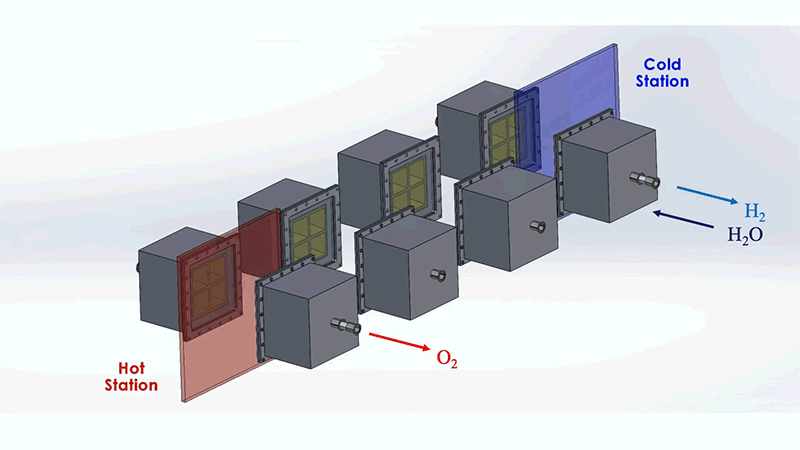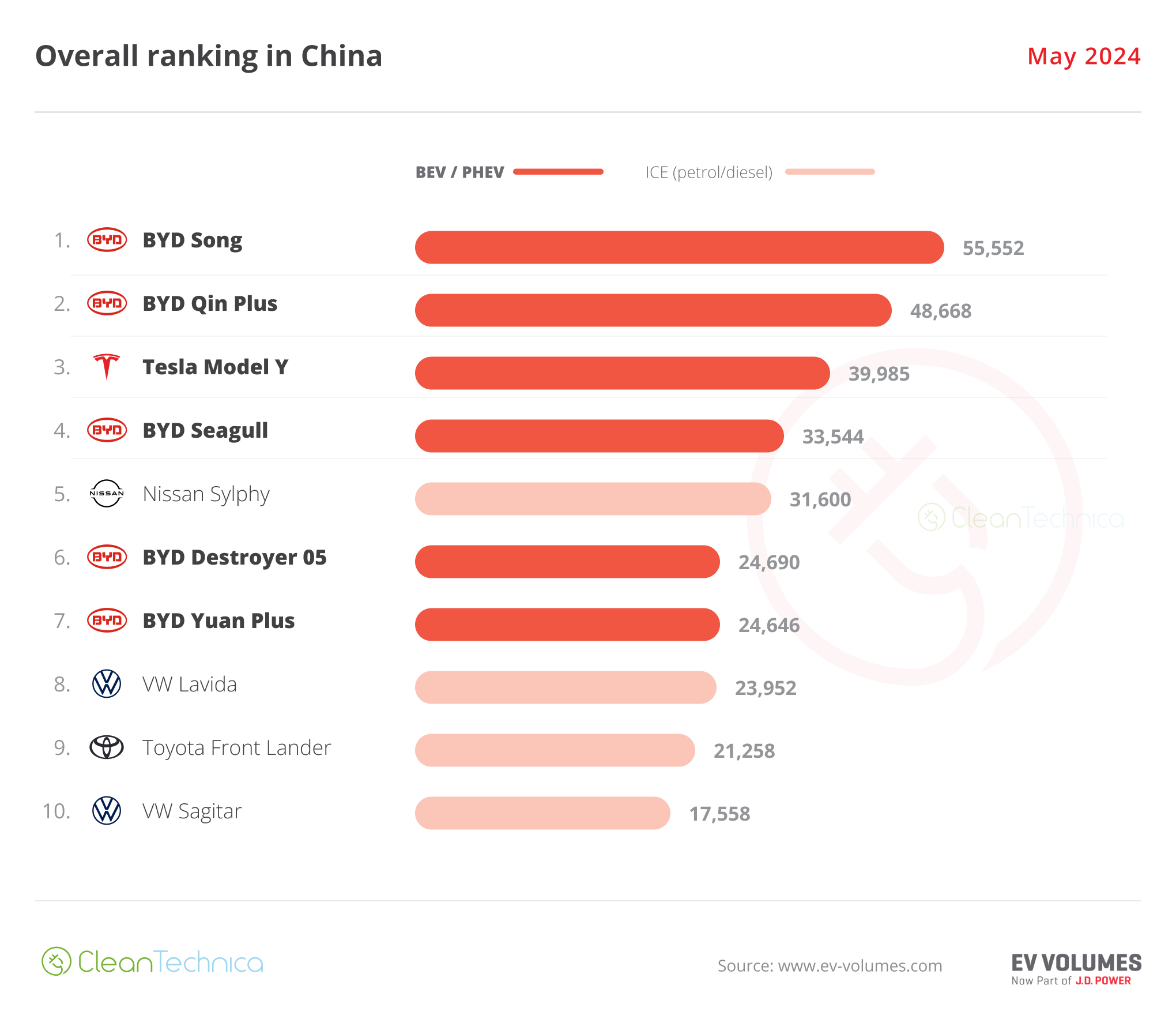Sign up for daily news updates from CleanTechnica on email. Or follow us on Google News!
Hydrogen is much in the news these days. The US government has just announced a $7 billion initiative designed to speed access to clean hydrogen. Advocates say we can split water into its components — hydrogen and oxygen — by passing a strong electrical current through it. They’re right. That process does work, but it requires enormous amounts of electricity to produce hydrogen in large quantities.
The proponents put a happy face on things by saying we can just use excess renewable energy to power the electrolyzers. They completely overlook the fact that there might be other uses for that excess energy, like storing it for later use. They also ignore that we are only about 10% of the way toward meeting all the world’s energy needs with renewables. It will be a long time before they are so abundant that people will be looking for new uses for them. The days of electricity that is too cheap to meter are coming, but they aren’t here yet and won’t be anytime soon.
MIT & Hydrogen

Credit: MIT News
Researchers at MIT say they have a solution. They claim to have invented a train-like system of reactors that split water into hydrogen and oxygen using only sunlight. The system harnesses the sun’s heat to directly split water and generate hydrogen — a clean fuel that can power long-distance trucks, ships, and planes while emitting no greenhouse gas emissions in the process. The researchers call this “solar thermochemical hydrogen” or STCH.
STCH offers a totally emissions-free alternative, since it relies entirely on renewable solar energy to drive hydrogen production. But so far, existing STCH designs have been plagued by limited efficiency. Only about 7% of incoming sunlight is used to make hydrogen.
The MIT research team says its latest design could be the breakthrough they have been searching for. Using their new reactor train, they estimate up to 40% of the sun’s heat could be harnessed to generate hydrogen. That increase in efficiency would drive down the system’s overall cost and make STCH a potentially scalable, affordable option to help decarbonize various industries.
“We’re thinking of hydrogen as the fuel of the future, and there’s a need to generate it cheaply and at scale,” says the study’s lead author, Ahmed Ghoniem, the Ronald C. Crane Professor of Mechanical Engineering at MIT and leader of the research team. “We’re trying to achieve the Department of Energy’s goal, which is to make green hydrogen by 2030, at $1 per kilogram. To improve the economics, we have to improve the efficiency and make sure most of the solar energy we collect is used in the production of hydrogen.”
The idea is that the system would be paired with an existing source of solar heat, such as a concentrated solar plant that uses mirrors to collect and reflect sunlight to a central receiving tower. An STCH system then absorbs the receiver’s heat and directs it to split water and produce hydrogen. This process is very different from electrolysis, which uses electricity instead of heat to split water.
A Two-Step Thermochemical Reaction
At the heart of a conceptual STCH system is a two-step thermochemical reaction. In the first step, water in the form of steam is exposed to a metal. This causes the metal to grab oxygen from steam, leaving hydrogen behind. This metal “oxidation” is similar to the rusting of iron in the presence of water, but it occurs much faster. Once hydrogen is separated, the oxidized (or rusted) metal is reheated in a vacuum, which acts to reverse the rusting process and regenerate the metal. With the oxygen removed, the metal can be cooled and exposed to steam again to produce more hydrogen. The process can be repeated hundreds of times.
The MIT researchers say their system, which resembles a train of box-shaped reactors running on a circular track, will optimize the process. In practice, the track would be set around a solar thermal source, such as a CSP tower. Each reactor would first pass through a hot station where it would be exposed to the sun’s heat at temperatures of up to 1,500 degrees Celsius. This extreme heat would effectively pull oxygen out of a the metal inside each reactor.
The metal would then be in a “reduced” state — ready to grab oxygen from steam. For this to happen, the reactor would move to a cooler station at temperatures around 1,000 C, where it would be exposed to steam to produce hydrogen. Other similar STCH concepts have run up against a significant obstacle — what to do with the heat released by the reduced reactor as it is cooled? Without recovering and reusing this heat, the system’s efficiency is too low to be practical.
A second challenge has to do with creating an energy efficient vacuum where metal can de-rust. Some prototypes generate a vacuum using mechanical pumps, though the pumps are too energy intensive and costly for large scale hydrogen production.
Clean Hydrogen & Energy Efficiency
The MIT design incorporates several energy-saving workarounds. First, in order to recover most of the heat that would otherwise escape from the system, reactors on opposite sides of the circular track are allowed to exchange heat through thermal radiation — hot reactors get cooled while cool reactors get heated, which keeps the heat within the system.
Second, they added a another set of reactors that circle around the first train, moving in the opposite direction. This outer train of reactors operates at cooler temperatures and is used to evacuate oxygen from the hotter inner train without the need for energy-hungry mechanical pumps. Both reactor trains run continuously to generate separate streams of pure hydrogen and oxygen.
This is all theoretical at this point. In detailed simulations of the conceptual design, the team found it would significantly boost the efficiency of solar thermochemical hydrogen production from 7%, as previous designs have demonstrated, to 40%.
“We have to think of every bit of energy in the system, and how to use it, to minimize the cost,” Ghoniem says. “With this design, we found that everything can be powered by heat coming from the sun. It is able to use 40 percent of the sun’s heat to produce hydrogen.”
“If this can be realized, it could drastically change our energy future by enabling hydrogen production, 24/7,” says Christopher Muhich, an assistant professor of chemical engineering at Arizona State University, who was not involved in the research. “The ability to make hydrogen is the linchpin to producing liquid fuels from sunlight.”
In the coming year, the researchers will build a prototype of the system and test it at a DOE concentrated solar power facility. The Department of Energy is currently funding the project. “When fully implemented, this system would be housed in a little building in the middle of a solar field,” Patankar explains. “Inside the building, there could be one or more trains each having about 50 reactors. And we think this could be a modular system, where you can add reactors to a conveyor belt, to scale up hydrogen production.”
The Takeaway
A regular reader commented on a recent hydrogen story this way, “Hydrogen is NG in disguise. A fossil fuel Trojan horse, nothing more. Complete waste of time and resources.” We must admit, many of us who gather around the CleanTechnica herbal juice bar on a daily basis believe the same thing.
But this story has a different feel to it. Clean hydrogen is needed to decarbonize several industries that are big contributors to the world’s carbon emissions, particularly steelmaking. Hydrogen may also be used to produce clean burning fuels that replace the ones the world depends on today to power its transportation devices.
There is no doubt that handling and transporting hydrogen presents significant challenges. And there are charlatans like the methane gas industry who want to add some to their methane gas pipelines so they can make some outrageously ridiculous claims about how their climate-killing products are 1 or 2 percent cleaner than they used to be.
A decarbonized world will need a source of affordable clean hydrogen. This idea from some very smart people at MIT may actually get us there.
Have a tip for CleanTechnica? Want to advertise? Want to suggest a guest for our CleanTech Talk podcast? Contact us here.
EV Obsession Daily!
I don’t like paywalls. You don’t like paywalls. Who likes paywalls? Here at CleanTechnica, we implemented a limited paywall for a while, but it always felt wrong — and it was always tough to decide what we should put behind there. In theory, your most exclusive and best content goes behind a paywall. But then fewer people read it!! So, we’ve decided to completely nix paywalls here at CleanTechnica. But…
Thank you!
Tesla Sales in 2023, 2024, and 2030
CleanTechnica uses affiliate links. See our policy here.




